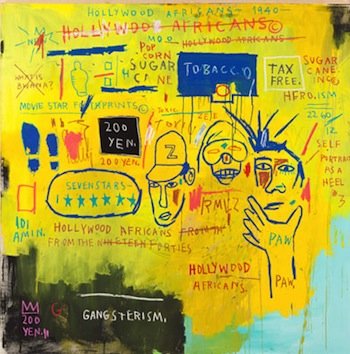Solomon R. Guggenheim Museum presents Gabriel Orozco. Asterisms, an exhibition on view From November 9, 2012 through January 13, 2013, a two-part sculptural and photographic installation by the Mexican-born artist comprising thousands of items of detritus he gathered at two sites—a playing field near his home in New York and a protected coastal biosphere in Baja California Sur, Mexico, which is also the repository for flows of industrial and commercial waste from across the Pacific Ocean. The two newly commissioned works invoke several recurring themes in Orozco’s oeuvre, including the traces of erosion, poetic encounters with mundane materials, and the ever-present tension between nature and culture.

Installation view: Gabriel Orozco: Asterisms, Deutsche Guggenheim, Berlin, July 6–Oct. 21, 2012 © 2012 Gabriel Orozco. Photo by Mathias Schormann
The exhibition is organized by Nancy Spector, Deputy Director and Chief Curator, Solomon R. Guggenheim Foundation, and Joan Young, Director, Curatorial Affairs, Solomon R. Guggenheim Museum, and is accompanied by a richly illustrated catalogue. This exhibition is made possible by Deutsche Bank. The Leadership Committee for Gabriel Orozco: Asterisms is gratefully acknowledged for its support: Katherine Farley and Jerry I. Speyer, Marieluise Hessel and Ed Artzt, and Larry and Marilyn Fields.
Asterisms marks the eighteenth project in the series of commissions organized by the Guggenheim Foundation and the Deutsche Guggenheim in Berlin, where it is on view through October 21. One component of the exhibition, Sandstars, responds to the unique environment encountered in Isla Arena, Mexico, a wildlife reserve, which is simultaneously a whale mating ground, whale cemetery, and industrial wasteland. Orozco has worked there before, having extracted from its sands the whale skeleton that forms the sculpture Mobile Matrix (2006), now permanently installed in the Biblioteca de México José Vasconcelos in Mexico City. His return to this sanctuary yielded entirely new results in response to the voluminous amounts of detritus deposited there by ocean currents. He created a large sculptural installation from the refuse he collected—including metal and plastic buoys, athletic balls, glass bottles, incandescent light bulbs, wooden oars, metal implements like screws and hinges, Styrofoam in various forms, construction-site hard hats, and ossified rolls of toilet paper—by subjecting it to taxonomic arrangement on the gallery floor. This monumental sculptural carpet of nearly 1,200 objects is accompanied by twelve large-scale gridded photographs of images of the individual objects in a studio setting, organized typologically by material, color, size, and so on. A thirteenth grid documents the landscape from which the objects were retrieved, along with incidental compositions made in situ from the castaway items. This framed pictorial inventory is shown in proximity to the sculptural accumulation, creating a kind of visual ricochet between an object and its representation. The effect is one of entropic dissolution tempered by rigorous order.
Included with Sandstars is a video, Whale after Waves (2012), which illuminates the environment of Isla Arena.
The second component, Astroturf Constellation, similarly explores taxonomic classification, but on a completely different scale. It comprises a collection of small bits of debris left behind by athletes and spectators in the Astroturf of a playing field on Pier 40 in New York, where the artist regularly throws boomerangs. Orozco displays these myriad items—including coins, sneakers logos, bits of soccer balls, candy wrappers, wads of chewing gum, and tangles of thread, again numbering nearly 1,200—on a large platform. As in Sandstars, the objects are displayed alongside thirteen photographic grids, a combination that again underscores the nuanced relationship between sculpture and photography in Orozco’s oeuvre.
In the exhibition, and the commission as a whole, the two related bodies of work play off each other in a provocative oscillation between the macro and the micro. Asterisms also reveals and amplifies Orozco’s subtle practice of subjecting the world to personal, idiosyncratic systems.
For more information, call 212 423 3500 or visit the museum online at: guggenheim.org



